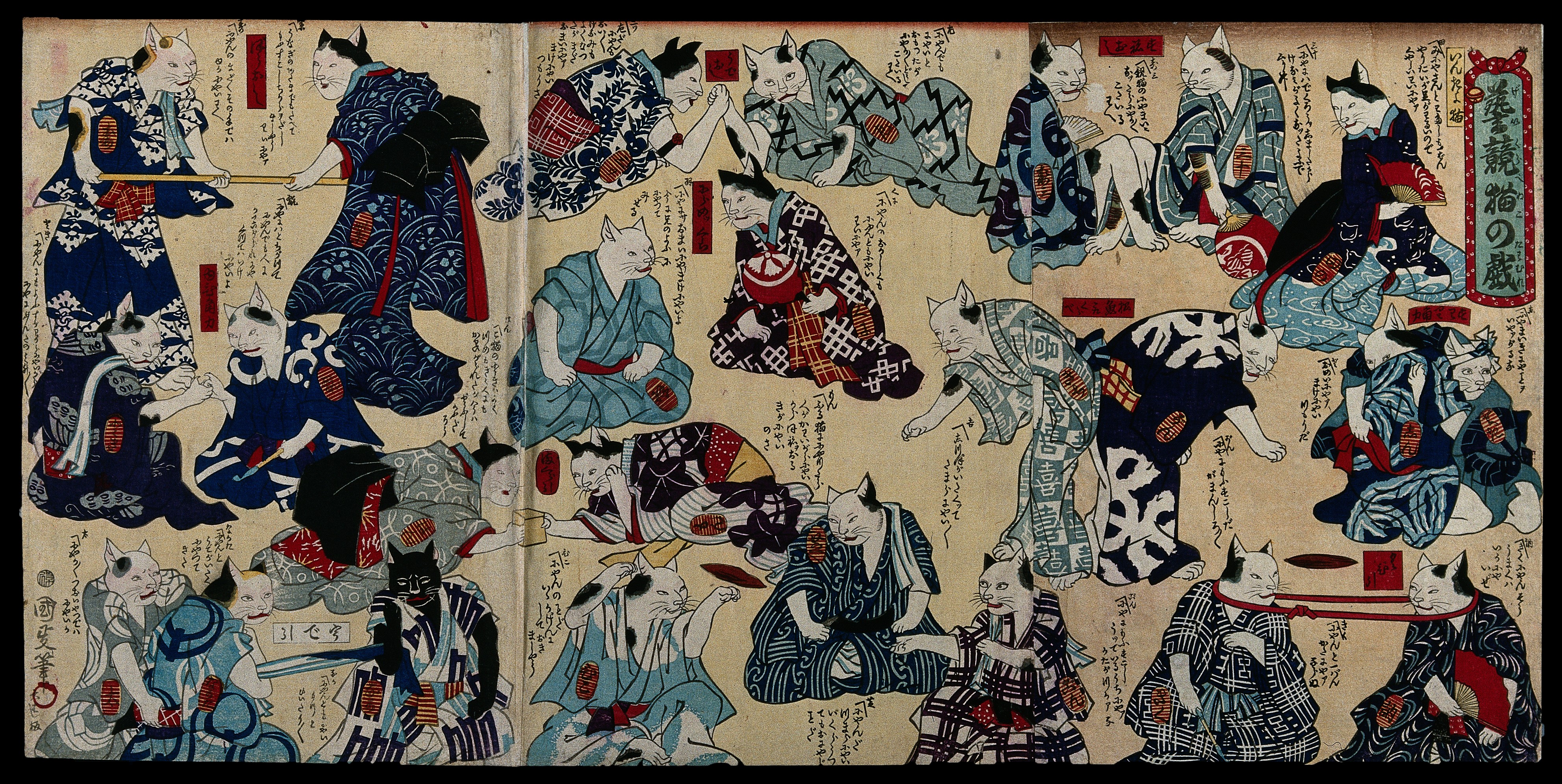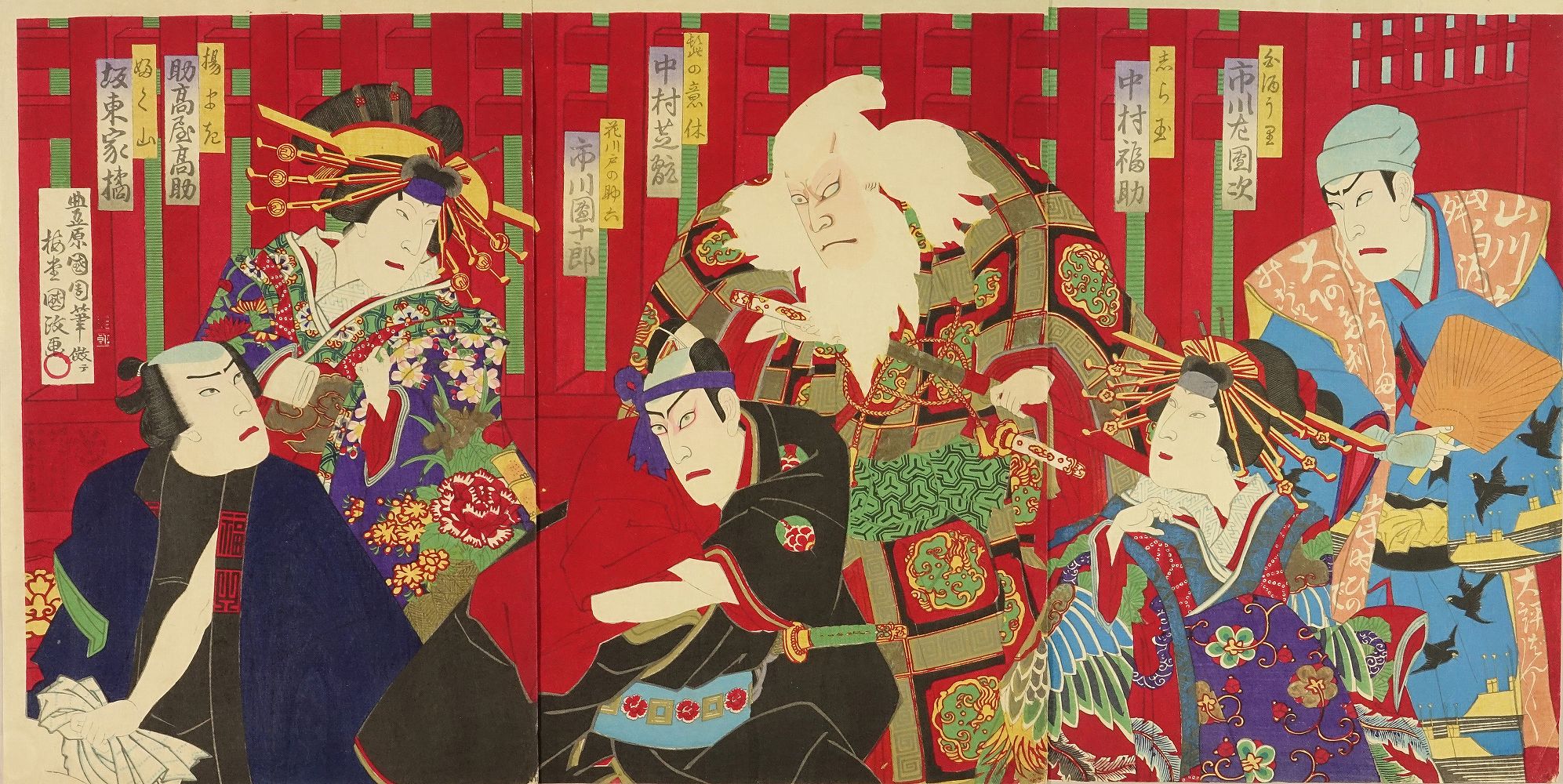This month, we were supposed to celebrate the Olympic Games in Tokyo. The Olympic Games will hopefully be back next year, but we have something to cheer you up, combining games, Japanese art, and cats!
This woodblock print was created by an ukiyo-e artist known as Utagawa Kunimasa IV (1848–1920). Throughout his career, he used multiple names: Baidō Hōsai, Baidō Kunimasa, Kōchōrō, Kunimasa IV, Kunisada III, and Toyokuni V.
He was a member and the last major master of the Utagawa school, one of the leading schools of ukiyo-e: half of the prints surviving today come from there.
Utagawa Kunimasa IV created during the Meiji era. It was a period marked by industrialization and modernization of Japan. He specialized in prints of kabuki actors (yakusha-e).
This kind of woodblock prints was the most popular and the most commercially successful. Other types of prints Kunimasa IV designed were war prints (senso-e), pictures of civilization and modernization (kaika-e), and board game designs (e-sugoroku). He created book and newspaper illustrations, images for children, and humoristic and genre scenes.
This triptych is an example of a humoristic depiction of cats, which was a popular theme in Japanese art and culture. The ukiyo-e cats were often depicted as people and engaging in activities typical for humans. Sometimes it was done just for fun and pleasure. But the images of cats also served as means to parody the society or work around the rules, like when the government forbade the creation of portraits of kabuki actors and artists used cats instead.
The cats in this artwork are wearing human clothes. They're playing a variety of traditional games: tug of war, including a neck version of the game, arm wrestling, and throwing with bean bags. We hope this painting will encourage you to stay active together with your cat. We present this piece thanks to Europeana.
P.S. If you need more traditional game inspiration from another part of the world, check here. To see what happens when the cats don’t engage in physical activity, check the Fat Cat Art.


 Utagawa Kunimasa IV
Utagawa Kunimasa IV